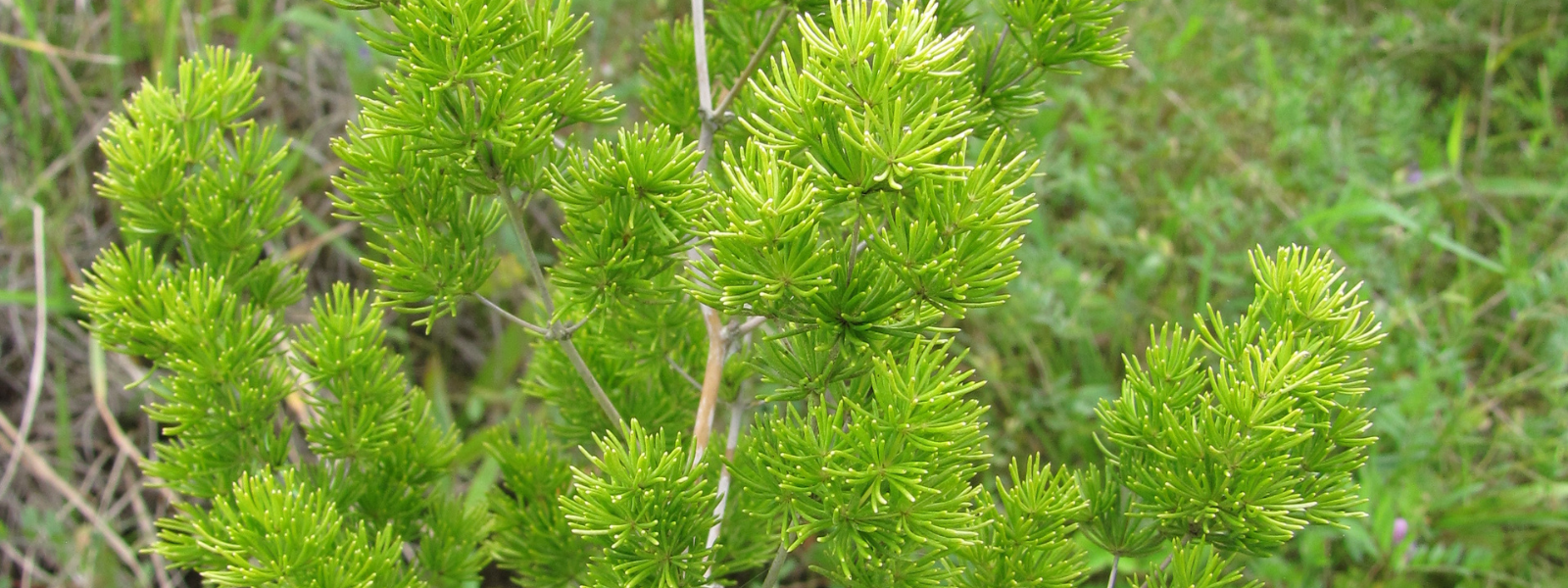
Common Name
Ming asparagus fern, Climbing Asparagus Fern, Ferny Asparagus, Pom pom asparagus, or Zig zag asparagus.
Scientific Name
Asparagus macowanii
Family
Asparagaceae
Lifecycle
Perennial
Seasons of Growth
Year-round
Key Distinguishing Feature
Fern-like foliage on arching stems
• Growth Form: Ming Asparagus Fern is a climbing or trailing herbaceous plant that produces long, slender stems. It may form dense mats or climb over other vegetation.
• Leaves: The leaves are reduced to tiny, scale-like structures along the stems. They are typically green and have a feathery or fern-like appearance.
• Flowers: The flowers are small, inconspicuous, and greenish-white. They are borne in axillary clusters along the stems.
• Berries: Ming Asparagus Fern produces small, round, red berries that contain seeds.
• Habitat: Ming Asparagus Fern is commonly found in a variety of habitats, including forests, woodlands, disturbed areas, and gardens. It is native to southern Africa but has become naturalized in other regions.
Ecological Impact:
• Ming Asparagus Fern is considered invasive in some regions outside its native range, including parts of Australia. It can form dense mats that smother native vegetation and alter ecosystems.
Control Methods:
• Control of Ming Asparagus Fern often involves a combination of mechanical, chemical, and cultural methods.
• Mechanical methods include cutting or removing the plant to reduce its biomass.
• Herbicides may be used for control, but care must be taken to use them safely and effectively, following local regulations.
• Preventing the establishment and spread of Ming Asparagus Fern through early detection and rapid removal is important.
Ming Asparagus Fern is a challenging invasive plant that requires active management to prevent its spread and protect native ecosystems. Local environmental agencies often provide guidance on the best control practices for this invasive species.
Key Products for Control:
-
Envu Method - Aminocyclopyrachlor (present as the potassium salt)
-
Indigo Rapid Fire 800 - Glyphosate (present as acid and ammonium salt)




